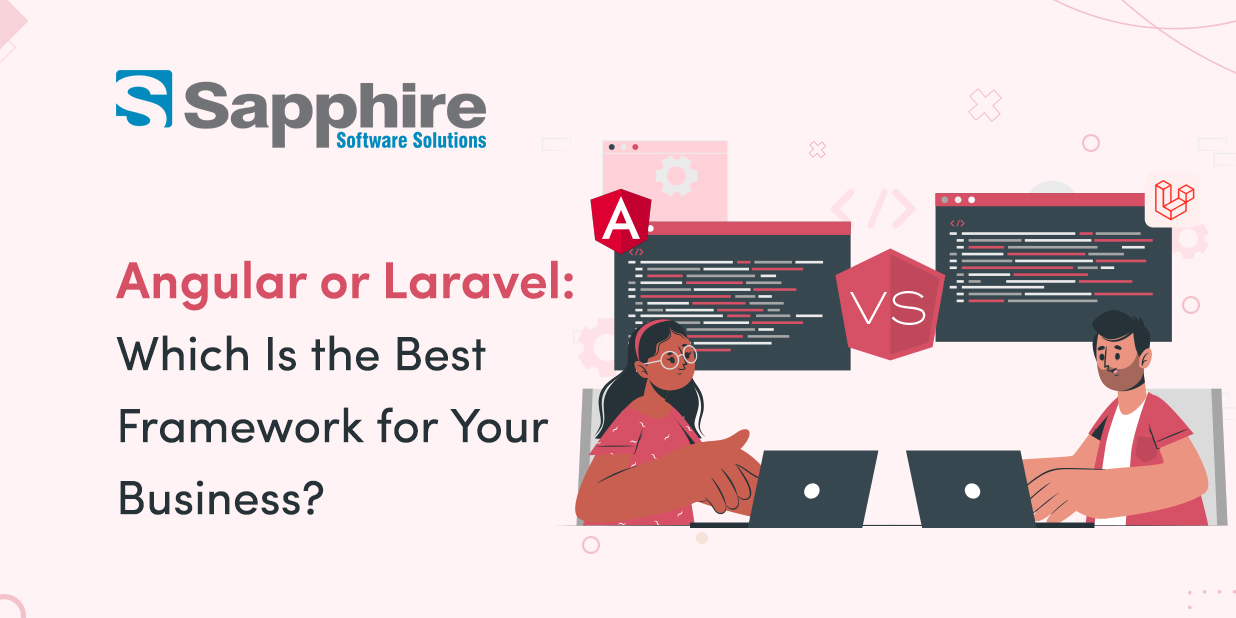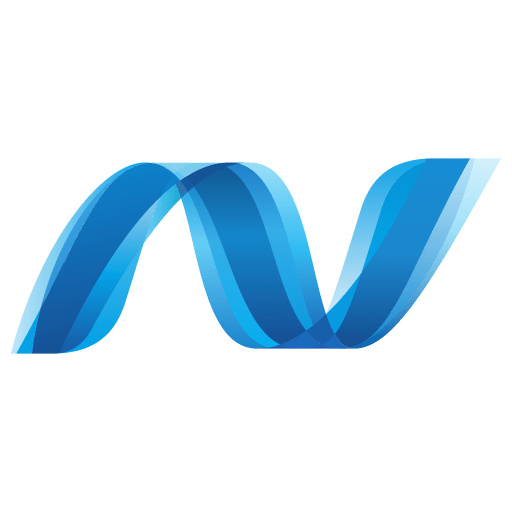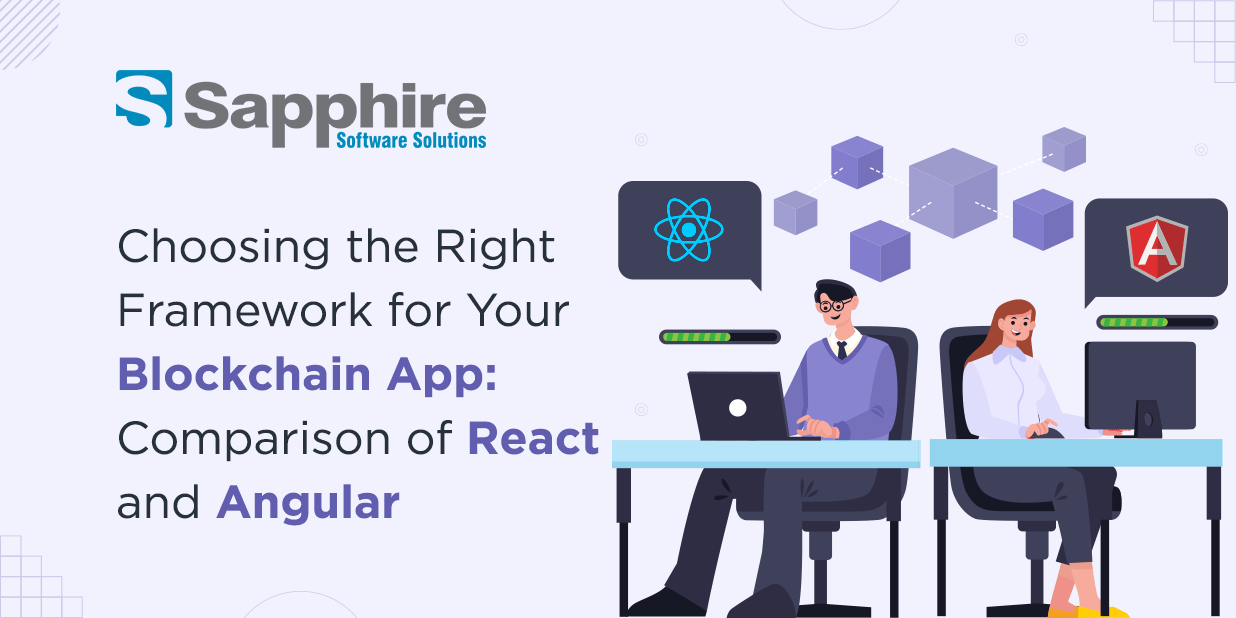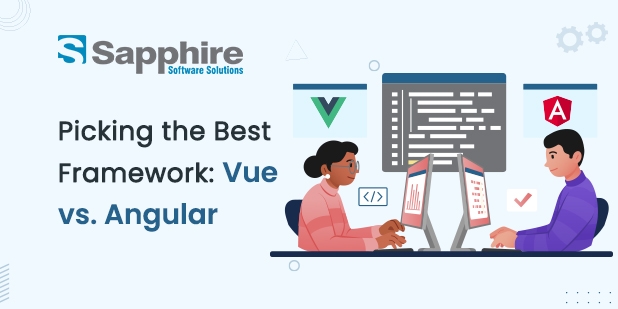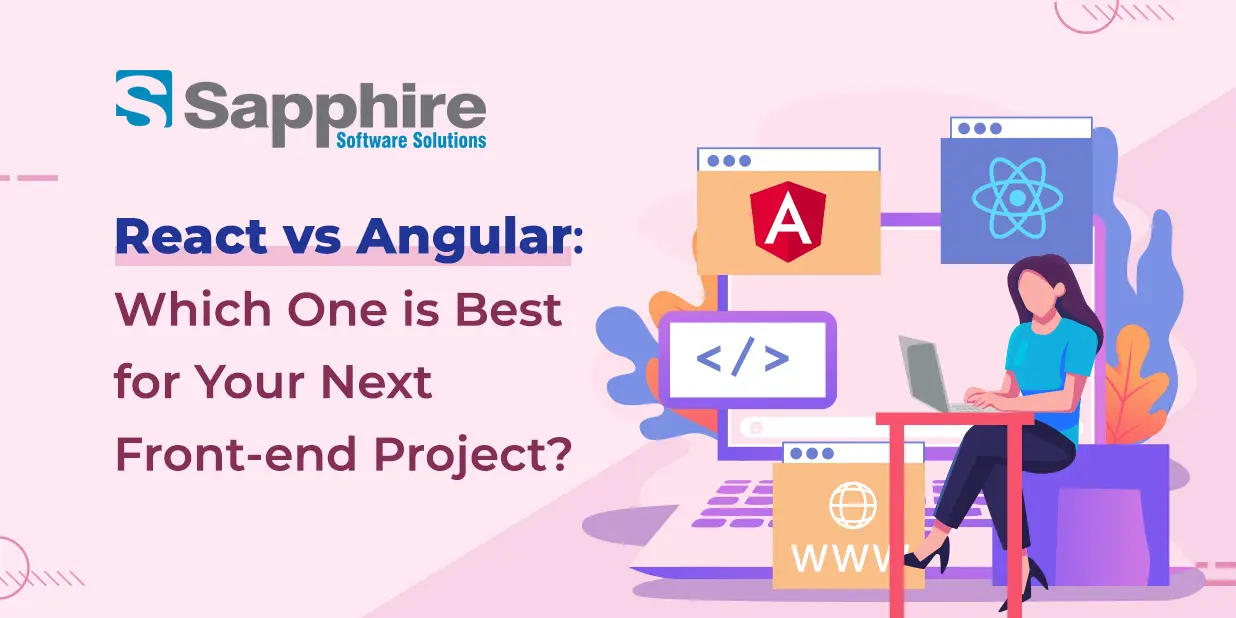Regarding front-end development, both Angular and Laravel are the best options. You must grasp each of these technologies separately and how they vary from one another generally to comprehend the overall consequences. We’ll examine the benefits and drawbacks of Angular.js and Laravel in this essay, as well as use cases and recommended practices. We’ll also compare the two frameworks’ features, performance, scalability, usability, and other aspects. To recruit Laravel or Angular engineers appropriately, you’ll better grasp which framework is suitable for your project at the end of this article.
Overview of Angular and Laravel:
Angular:-
The open-source JavaScript framework Angular is well-regarded for creating web applications. It was created by Google in 2010 and was first known as AngularJS. The “JS” prefix was deleted in later releases, and the framework is now known as Angular.
Advantages of Angular:
– Effective data binding
– modular construction
– TypeScript assistance
– A sizable and vibrant community that makes it simple to locate services and seek assistance
A cost-effective option for running mobile apps across devices both online and offline is an Angular PWA. PWAs function in a browser but act like native apps. People prefer PWAs primarily because they can start using an app immediately without going to Google Play or the App Store to download it. The top features of Angular are the way to go if you want to develop lightweight applications. With the help of this TypeScript-based framework, you can create neat, maintainable, and testable interactive SPAs.
Advantages of Laravel:
A web application framework with expressive and beautiful syntax is called Laravel. To be genuinely meaningful, development must be a fun and creative process, in our opinion. Laravel aims to simplify development by simplifying routine activities like authentication, routing, sessions, and caching that are utilized in most web projects.
– Simple to use and learn
– Dependable security measures
– There is a large amount of documentation and a vibrant community, making finding solutions to common problems simple.
People use Laravel because they prefer to work quietly while creating web applications, and Laravel offers much more than that. This expedites the creation of web applications, making Laravel a rapid and straightforward framework. The creation of the Laravel framework gave PHP an entirely new meaning. Along with faster launch times, independence from lock-in techniques, strong security, and other advantages, Laravel’s open-source functionality offers some additional advantages. Laravel is the most popular PHP framework as a result, being used by over 3,17,218 websites. Check out our Hire Angular Developer in USA for your upcoming projects.
Front-end Development: Angular
Key Features and Benefits:
Let’s examine some of Angular’s salient characteristics and advantages:
Two-Way Data Binding:
The two-way data binding function of Angular enables automated data synchronization between the model and the display. The display updates in real-time whenever the model does, and vice versa. Angular apps have become more effective and less challenging to maintain due to streamlining the development process and decreasing manual data manipulation requirements.
Architecture Based on Components:
A component-based architecture, which Angular uses, divides the program into reusable and modular components. The program is simpler to manage and maintain because each component has its logic, data, and user interface. The component-based design enables developers to create complex programs more efficiently by fostering reuse, scalability, and testability.
Dependency Injection:
The dependency injection framework with Angular makes it possible to handle dependencies across components effectively. It makes injecting and maintaining dependencies easier, increasing the code’s modularity, maintainability, and testability. Reduced coupling between components allows for organizing code more effectively and encourages code reuse. st
Directives and Templating:
Our angular development company can create dynamic, reusable HTML templates using Angular’s robust templating system. The templates may be improved with Angular’s directives, which provide HTML components with more capability and behavior. The flexibility and interactivity of the user interface are improved through directives, which allow the construction of custom components, attribute directives, and structural directives.
Reactive Forms:
Reactive forms, a component of Angular, provide a reliable and adaptable approach to managing form inputs and validation. It enables programmers to reactively and declaratively design form controls and the rules governing their validation. Reactive forms make creating sophisticated and interactive forms simpler by providing capabilities like dynamic form controls, configurable validators, and form state management.
Single-page applications (SPAs) with numerous views and navigating between them may be made possible using Angular’s robust routing and navigation mechanism. The router module enables programmers to create sophisticated navigation patterns and manage challenging routing circumstances by offering capabilities like route guards, slow loading, and parameterized routes.
Use Cases and Industries:
Building large-scale business apps, single-page applications (SPAs), and advanced web applications (PWAs) are all excellent uses for Angular’s strengths as an application framework. It has found widespread application in e-commerce, healthcare, finance, and logistics sectors, all needing complicated user interfaces and real-time data processing.
Challenges and Limitations:
Compared to other front-end frameworks, Angular’s learning curve is more challenging despite delivering a comprehensive framework. In addition, big Angular apps may have a larger memory footprint, which might hurt performance if the memory use needs to be appropriately optimized. These issues, however, can be efficiently minimized by using appropriate architectural considerations and best practices.
Backend Development: Laravel
Key Features and Benefits:
Popular PHP framework Laravel is renowned for its clean syntax, powerful capabilities, and developer-friendly setting. It provides various essential features and advantages that encourage broader use. Let’s examine some of Laravel’s salient characteristics and advantages:
Expressive Syntax:
Developers may create code more understandably and naturally thanks to Laravel’s clear and expressive syntax. Because the framework adheres to the “convention over configuration” approach, less boilerplate and repetitive code is required. The expressive syntax of Laravel encourages clear and maintainable code while speeding up and improving development.
MVC Architecture:
The Model-View-Controller (MVC) architectural paradigm, which encourages concern separation and modular development, is used in Laravel. The program is more structured, manageable, and scalable thanks to the MVC framework, which provides for a clear separation of business logic (model), presentation (view), and application flow (controller).
Eloquent ORM:
Eloquent, an easy-to-use and powerful Object-Relational Mapping (ORM) system, is included with Laravel. It makes searching and manipulating database records easier by offering a fluent and expressive syntax. Relationships, eager loading, and sophisticated features like mutators and accessors are supported, improving the effectiveness and developer-friendliness of database interactions.
Artisan CLI:
The Artisan command-line interface (CLI) in Laravel provides several valuable tools to simplify development processes. With only a few keystrokes, developers may use Artisan to produce code skeletons, carry out database migrations, create test cases, and do many other operations. By automating repetitive operations, Artisan increases developer productivity and saves developers significant time.
Routing and Middleware:
The routing system in Laravel offers a straightforward and beautiful means of defining routes and managing HTTP requests. Clean and simple URL architectures are made possible by the simplicity with which developers may build routes and related actions. Additionally, Laravel provides middleware, which enables operations like request preparation, authentication, and permission by intercepting and altering incoming requests.
Blade Templating Engine:
The Blade templating engine, which Laravel uses, offers a clear and practical approach to generating dynamic views. Blade includes functions like loops, conditional expressions, template inheritance, and reusable parts. It facilitates the production of reusable and maintainable view templates, improves the separation of responsibilities, and encourages code reuse.
Security:
Security is given the utmost importance in Laravel, and it offers capabilities that developers may use to safeguard their applications. It has features including built-in encryption, CSRF (Cross-Site Request Forgery) protection, and authentication procedures. The security capabilities of Laravel assist developers in preventing typical online vulnerabilities, guaranteeing the protection of sensitive data, and thwarting possible attackers.
Challenges and Limitations:
Laravel is mainly intended for PHP development. Therefore programmers with good experience in PHP would gain the most from using it. Despite its many advantages, Laravel was created primarily for PHP development.
Choosing the Right Framework for Your Business:
Considerations & Requirements:
It is essential to evaluate the requirements of your project, your team’s experience, scalability demands, performance concerns, and the long-term maintenance needs of the framework before choosing the ideal one for your company. Consider aspects such as the rate of development, the support of the community, and the capability of integration with already existing systems.
Integration and Compatibility:
The front-end skills of Angular may be combined with the backend expertise of Laravel to create a full-stack solution that works without a hitch when the two frameworks are used in tandem. They provide interaction with RESTful APIs, making it simpler to connect with both the application’s front and backend components. This combination is helpful for the construction of complicated programs that are scalable and easy to maintain.
Conclusion:
Both Angular and Laravel are robust frameworks with unique advantages and applications. With its complete toolkit for creating dynamic and interactive user interfaces, Angular shines at front-end development. While offering an expressive syntax and a wealth of tools for creating safe and scalable apps, Laravel excels at backend development.
The decision between Angular and Laravel ultimately comes down to your unique business needs, project scope, and level of competence on your development team. Consider elements like your application’s complexity, UI/UX requirements, performance standards, and compatibility with your current systems. You can contact a Laravel development company like Sapphire to develop a Laravel or Angular app.



















